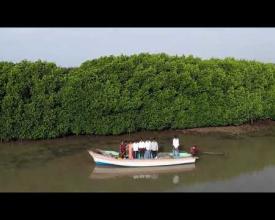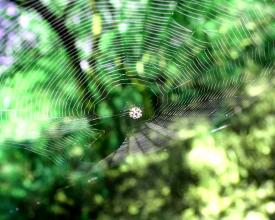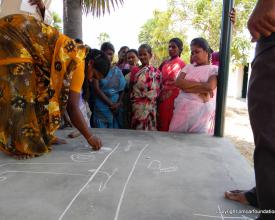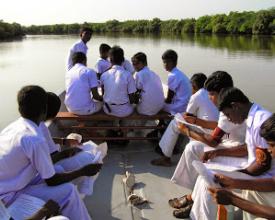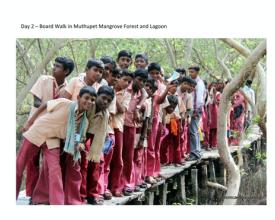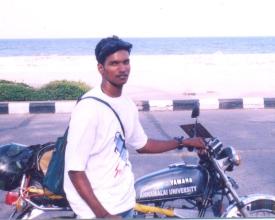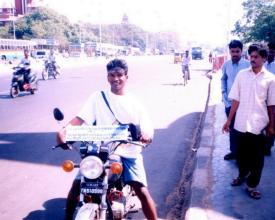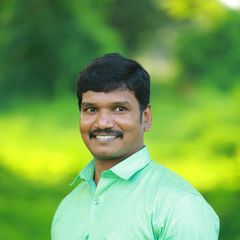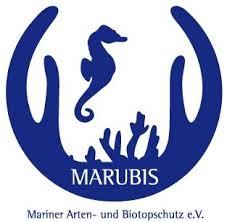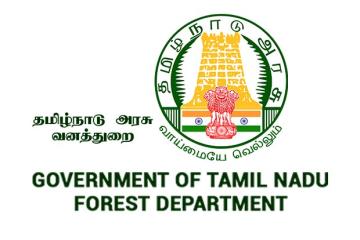
Mangrove Restoration for Sustainable Fishery in Palk Bay, India
Mangrove degradation in our area is due to lack of awareness about the benefit of mangroves. They were considered as the fuel wood, eradicated for shrimp farming and cattle grazing. There is no systematic, participatory mangrove restoration approach in Palk Bay. So our organization seeks to address this issue by raising awareness among local community by involving them in participatory mangrove conservation practices in Palk Bay.
Context
Challenges addressed
Mangrove degradation in our area is due to lack of awareness about the benefit of mangroves as they are considered as fuel wood, eradicated for shrimp farming and cattle grazing. There is no systematic, participatory mangrove restoration approach in Palk Bay. So we seek to address this issue by raising awareness among local community by involving them in participatory mangrove conservation practices
Location
Process
Summary of the process
Building Blocks
Participatory Mangrove Nursery and Plantations
We trained local community in seed collection, nursery raising techniques and plantation in selected sites by using locally adaptable strategies and low cost techniques. We have conducted village meetings to identify selected place for mangrove resotraiton, without disturbing daily life of fishers. We involved local community volunteers in fencing mangrove areas to prevent cattle grazing and put public sign boards as protected site. During suitable season, local community volunteers were involved to collect mangrove seeds, especially women groups involved in mangrove seed collection, segregation. Fisher men involved in building mangrove nurseries.
Enabling factors
We trained local community in seed collection, nursery raising techniques and plantation in selected sites by using locally adaptable strategies and low cost techniques. We have conducted village meetings to identify places for mangrove resotraiton, without disturbing daily life of fishers. We involved local community volunteers in fencing mangrove areas to prevent cattle grazing and put public sign boards as protected site. During suitable season, local community volunteers were involved to collect mangrove seeds, especially women groups.
Lesson learned
Any marine conservation project needs to be longterm, participatory, using low cost technology and community oriented which has to be designed by local experts with community leaders. Traditional knowledge has to be incorporated while developing conservation techniques such as mangrove plantation techniques.
- Selection of suitable mangrove species and suitable restoration sites and suitable plantation season. The strategy should formed based on the above three aspects.
- Seeds should be collected in right time, premonsoon, or they will washed up into the sea by monsoon.
- Never go for huge, mass mangrove plantation events, which will waste resources and plants. Instead plant mangroves every season slowly in only selected, well recognized sites by local community or there will be no mangroves trees after some years.
Participatory GIS mapping of Mangroves and Landuse Pattern
There is no clear data about land ownership and mangrove areas in coastal villages of project area. So, we developed simple, low cost GIS mapping techniques, which need participation of local community to display in village community halls. This technique provided a complete map of coastal village land use pattern that helps to locate mangrove plantation sites, flood prevention and controlling spread of shrimp farms. This map also used as a key tool to mutually understand village land use, conservation and sustainable development among people and local government. The same technical expertise was used to create boundary line GIS map of protected mangroves forest named as Muthupet in Palk Bay which is about 13000 square hectares.
Enabling factors
The main conditions are
- Training villagers in GPS survey
- Organizing public meetings, so that the beneficiaries understood the real value of this concept
- Involving volunteers in developing GIS maps
- Display of maps in public places and community halls in big size ( 5 X 4 feet size) for regular use
- Planting mangroves only in the selected area by people after developing mangroves
- Local mangrove conservation planning is easy for field forest officers, after developing our GIS map.
Lesson learned
Low cost GIS mapping is a very slow process
- Strong rapport with community is essential
- Traditional knowledge is very important on local land use pattern
- Women groups are very essential in developing maps.
- Good relationship with local forest department is essential to show our nonprofit interest in developing mangrove GIS maps.
Backyard mangrove nursery
There are two key facts:
- Raising large number of mangrove nursery is difficult and expensive.
- Community responsibility in mangrove conservation should be included for successful project.
So, our purpose is to involve fisher women self help groups in mangrove conservation by training them in mangrove raising techniques and grow large number of mangroves in backyards of every households of village. This approach shared the nursery raising man power and increased community responsibility in our project. The grown up mangrove seedlings were then brought to our nursery after three months. Every women who grow mangrove in her backyard received incentives for each mangrove seedlings. The same group of women was invited for mangrove training and participatory mangrove plantation event in local coast. This continuous involvement of women groups shared the responsibility, work load and provided financial benefits to local community.
Enabling factors
Mangrove restoration technical background and expertise is very important in raising mangroves and planting them in local coast. The technical knowledge should be mixed with traditional knowledge in site selection. Apart from the techniques, there should be strong commitment and dedication to communicate with local women groups so that they will come forward to learn and plant mangroves.
Lesson learned
Degraded mangroves can be raised into healthy forest thickets through long-term commitment, techniques and participation of local community. No mangrove plantation should be in large number which will be just for publicity but later mangroves will not survive in unsuitable sites. Without proper site selection by using traditional knowledge, mangrove restoration project will not be successful.
Mangrove awareness field trips and education for schools
The purpose is to attract more volunteers in mangrove restoration and marine conservation in Palk Bay by creating awareness among youths particularly school students. We approach local schools and explain teachers about the purpose. Then, our staff team conducts class education on local marine ecosystems with special reference to mangroves and seagrass beds of Palk Bay (the project area). After this class, we invite about 70 students from each school to our Field environmental education centre called as “OMCAR Palk Bay Environmental Education Centre” and a field trip to mangroves. After this field trip the interested students join as a volunteer with our organization, who are involved in various field conservation activities such as village mangrove surveys, dugong conservation interviews , organizing community events and participatory GIS mapping of mangroves and land use patterns.
Enabling factors
The students should be organized only through systematic set ups such as school with the support of local government. As students will pass on to higher classes there should be need to continue awareness events to new batches every year. Middle school students are very suitable for inspiring them in marine conservation (14 – 16 age group). Field trips should be arranged with high safety priorities in coastal and marine areas. In addition to this school drop outs, and young fishers can be invited along with the students.
Lesson learned
After joining as volunteers, the human energy of volunteers should be used and refreshed periodically, which can highly reduce project man power cost. The physical set up of our organization such as facilities and buildings have been very lively condition after being continuously used by thousands of students every year. So, any awareness should be lead to establishing such permanent facilities and not just a day of event.
Attracting Public towards Conservation by Expeditions
This was really Pushing Boundaries beyond my capability by 1100 km bike riding in 2002 and 600km sea kayaking in 2007. The purpose is to create mass awareness on marine conservation among public through TV, newspaper media towards the value of our local coastal ecosystems. In 2007 I paddled sea kayak along the coast for about ~20km everyday and reach a nearby village. I stayed on the beach and conducted marine conservation education classes on the shorelines, beaches, community halls, houses and schools. After spending time with those villagers, and registering some volunteers for our organization, I again paddled along the coast to next village. I did the same awareness by my 1100km bike expedition along the coast of my state Tamil Nadu in 2002.
Enabling factors
This one man awareness needed personal training and commitment especially for sea kayaking. A complete set of marine awareness materials, good knowledge on local coastal area and traditional knowledge of fishers was essential for both expeditions. Thousands of childrens, villagers and students were reached during those two expeditions A wide coverage of media was achieved through the expedition, which highlighted the conservation message of this expedition to common people.
Lesson learned
Mass public attention and media can be turned towards local marine conservation issues by organizing such expeditions. The expedition should be well planned and the person has to be easily approachable to public throughout. Large number of conservation booklets and materials has to be issued to public and media along the conservation expeditions. The route of expedition should be close to human inhabitants in order to get the attention of public/media about the purpose and updating the status of the expedition. 1200 km bike expedition for marine conservation awareness 2002 600km seakayak expedition for marine conservation awareness in 2007
Impacts
We planted more than 75,000 mangroves and created awareness about marine conservation among ~60000 students. Our mangrove plantation sites are now grown up into small mangrove forest thickets, which benefits local fishing community. The trained youth volunteers by our organization are assisting us in mangrove plantation and awareness. Our team now successfully created GIS map of entire reserve forest of Muthupet (protected area) with local forest department, which helps them for better management. Our technical support and field survey helped to create accurate boundary line along the boundary stones for about 13,000 hectares. Our village level mangrove GIS maps are displayed in community halls which supports decision making on new mangrove plantation sites, land use management and flood prevention. After a good recognization for our approach with local community, they helped us to establish Palk Bay Environment Education Centre in a coastal village which is now developing as a main place for coastal ecosystem conservation, research and awareness in our district in Palk Bay.
Beneficiaries
Fishermen and women, school students, young fishers/ school dropout youths.

